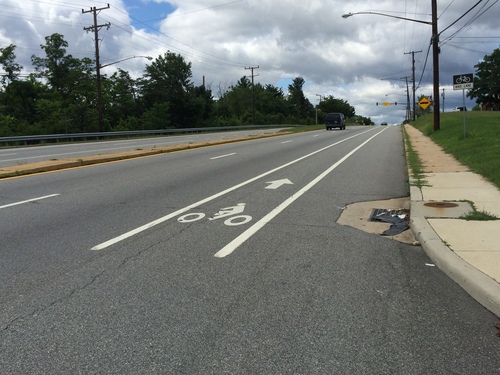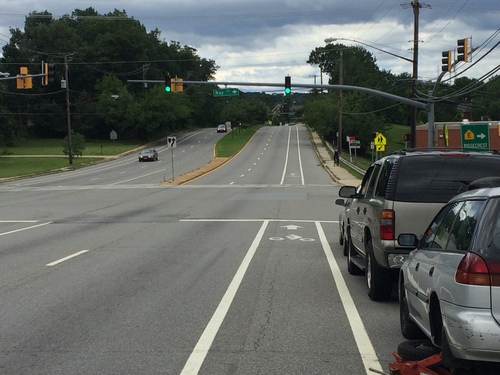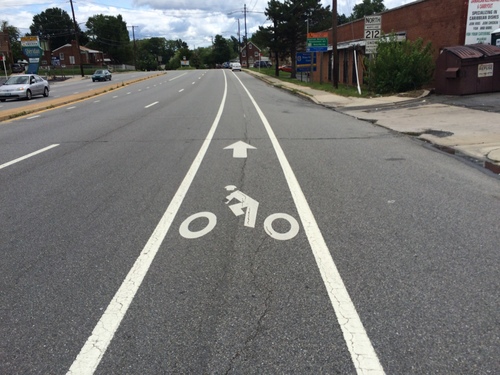This area road is now a lot more bike-friendly
A few years ago, a stretch of Riggs Road in Chillum, an area in northwest Prince George’s County, went down from six lanes to four. Bike and parking lanes went into the extra space. The result was a practical example of how to make over-built arterial highways more useful for all residents.
Converting Riggs Road was easy
Since the early 1960’s, Riggs Road has been a standard six-lane arterial highway, which is common throughout the parts of Maryland that border DC. After repaving the road in 2010, the Maryland State Highway Administration (SHA) decided to re-stripe the curb lanes between Sargent Road and Chillum Road as bike lanes with adjacent parking.
The right lanes were 12 feet wide, and they became five-foot bike lanes and seven-foot parking lanes. All of the changes took place within the existing roadway, so there was no construction or curb moving necessary.
What about the traffic?
Prior to the narrowing, this stretch of Riggs averaged 24,000 vehicles per-day. In the four years since the SHA narrowed the road (2011-2014), its average dropped to fewer than 19,000 vehicles per-day.
Sargent Road and New Hampshire Avenue, the two arterial roads that run parallel to Riggs, have not seen gains in traffic volumes since Riggs lost two travel lanes. It appears that 5,000 auto trips on Riggs Road simply went away after the repurposing of the curb lanes. In other words, there was a 20% drop in traffic when two car travel lanes went away.
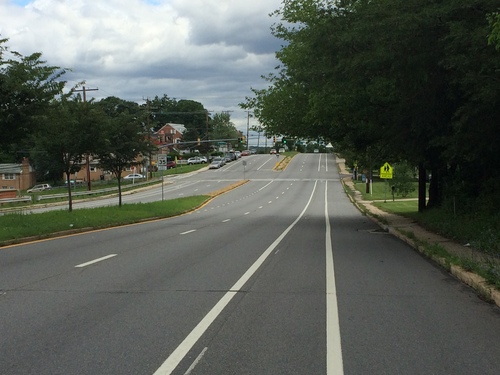
This part of Riggs Road has seen a 20% decrease in traffic since the lanes were repurposed for bikes and parking. Photo by the author.
There’s still room for improvement
While the bike lanes are an excellent addition to the road, the design could be tweaked to make cycling more comfortable.
The traffic on Riggs moves rather quickly within a few feet of people using the bike lanes. The road is signed for 35 MPH, but it seemed like most drivers were travelling at 40 or above. I found myself riding towards the right when possible to put some space between myself and the traffic.
Where parked cars are adjacent to the bike lane, cyclists are stuck in the driver’s side door zone, with the only alternative being to move into to the travel lane or ride on the sidewalk.
Swap the bike lane and parking lane
Riggs Road’s bike lane would be a lot safer if the parking lane sat between it and moving cars. Like the initial change, making this switch wouldn’t require widening or altering curbs.
When the SHA restriped Riggs Road, they did not change the width of the remaining travel lanes. Cutting the four remaining travel lanes to ten feet rather than 11 would slow traffic, making the space more comfortable for people using the road for something other than driving.
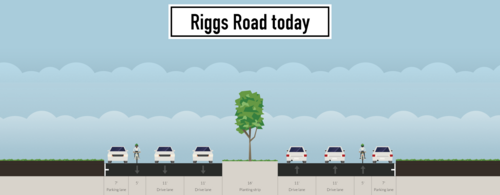
Currently, a cross section of Riggs Road between Sargent and Chillum Roads looks like this. Image created by the author on StreetMix.
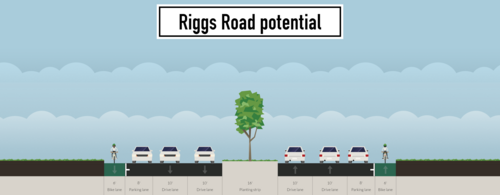
How Riggs Road could look if the parking lane and bike lane were switched. Image created by the author on StreetMix.
While these bike lanes could be better, they accommodate cyclists far better than most arterial highways in Montgomery and Prince George’s counties, which lack designated space for bikes. Other lightly-used six-lane highways in the DC area could be ideal candidates for an inexpensive and accommodating change like the one Riggs Road got.

